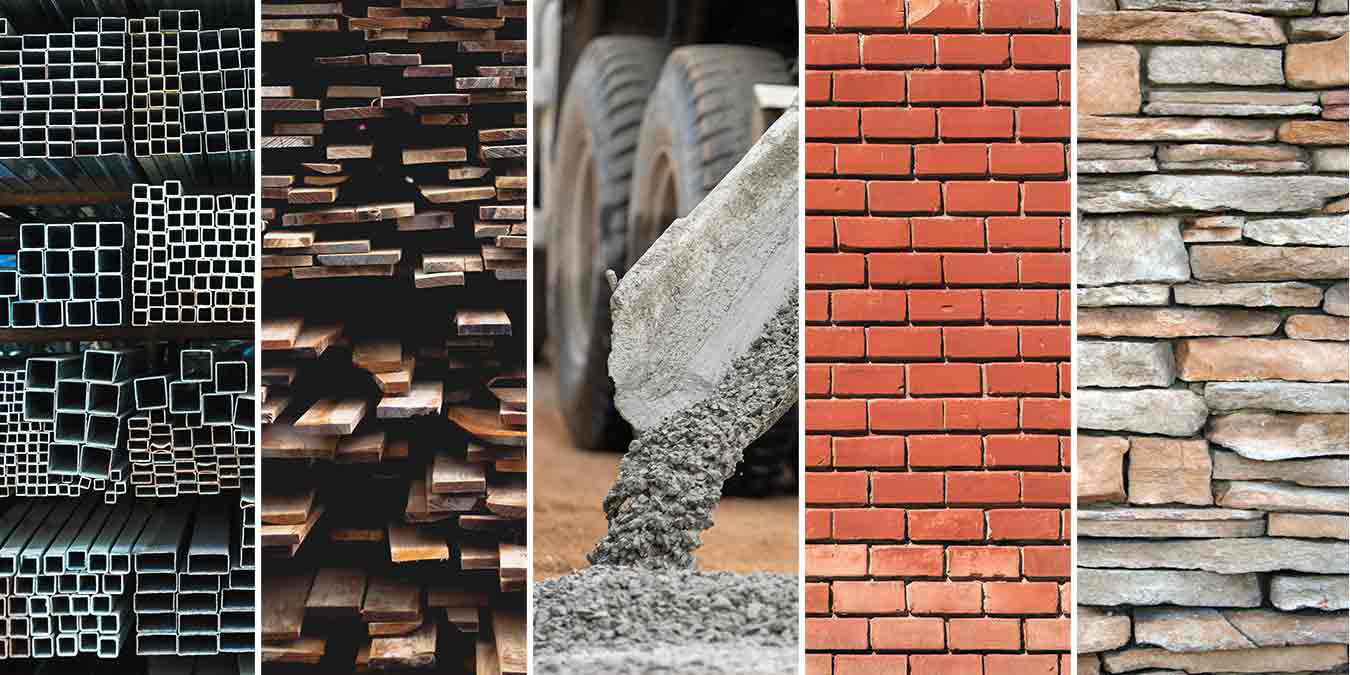Everybody has their own “waiting for my dream house” story, and one of our clients certainly had a very eccentric one. He asked us to supply construction materials that could vitalize his house for 500+ years, which in his own words, "would stay in my family for generations.”
While this desire and requirement seem to be whimsical, it is a fact that most people investing in building construction expect something similar, even while they express it differently.
Just to ensure that you remain abreast with what's suitable for your building and don't get played into the hands of dodgy builders, here's a guide to common building materials and why some of them are an absolute must for your dream house.
Why Should You Even Care About Construction Materials?
As an investor, since it will be your hard-earned money with which the building construction will materialize, you should achieve your goals and aspirations for the building at the end of it all.
Keeping that in mind, you might get actively involved with the designs and blueprints of the building, but you must remember that any good design comes to life only with good quality materials.
Further, it is an open secret that many builders and suppliers cut corners when using premium stuff, happily gorging on the extra profit margins so obtained.
Your only safeguard, in that case, is to be a little more aware. Generalizations usually don't work in the construction line, with materials, choices, and techniques differing enough to make it necessary for you to demand a distinctive blend of materials matching your needs.
Construction techniques have a good deal of regional influence, and so does the availability of construction materials. Therefore, knowing about the commonly used raw materials is necessary even to avoid budgeting constraints and to plan things most amicably.
- Classification of Building Materials
The primary classification of building materials
is based on their composition, separating them into inorganic and organic stuff. Inorganic construction materials require due processing and include the likes of gypsum, cement, lime, etc. Organic building materials are available in their usable form—wood and biomass being good examples.
Another system of classification is based on their utility and application in construction. For example, the building material can either be a binder, like cement and polymeric materials, or a structural building component like bricks, stones, etc. They can also be placed among other construction materials like paints and waterproofing compounds.
Common Building materials And Their Uses
The most widely used building construction materials list includes:
- Steel
In the modern construction world, steel is synonymous with strength and resilience. The high strength-to-weight and strength-to-height ratios of steel are the reasons why every structural engineer, true to his salt, adds steel components in tall buildings and colossal structures.
Since its production has now been upscaled several times, the procurement and installation of steel in construction projects are less time-consuming than concrete. With the addition of chromium to traditional steel, Stainless Steel was innovated, which is incredibly resistant to corrosion.
- Wood
The oldest and the most commonly used organic building material, wood has several characteristics that make it an ideal construction material. Times from a thousand years back to the current age of synthetic materials, being a readily available and easy to standardize material has kept its relevance alive.
Architects who plan residential buildings are keen on using wood for the great extent of insulation. Although, it might not be a good choice for foundations due to the extensive pressure treatment needed for its processing.
Still, its high tensile strength and decent flexibility are noteworthy.
- Concrete
Concrete is generally an aggregate of different items like gravel, building stones, etc., which are bound together with liquid binders like cement. The ability of concrete to take up any shape and then consolidate easily is widely used in building construction.
Concrete serves as a versatile and cost-effective option for building foundations in particular. The use of concrete reinforced by steel rods is prevalent in practical construction.
- Bricks
Another traditional building material, bricks or masonry in general, is still a force to reckon with when preparing load-bearing walls. Durable and fire-resistant alternatives, bricks, and masonry can shape the construction of load-heavy multi-story buildings in an economical way.
Again, a reinforcement technique where bricks are supported by concrete or steelworks quite well in practical life.
- Building Stones
The primary purpose of using stones in construction is to utilize their dense nature and provide resilience to buildings. A construction material which is in use for ages, the popularity of stones in this domain declined because they are too bulky and difficult to work with.
Slate and granite are high-utility building stones because of their exceptional fire resistance and durability, respectively. Overall, the limited yet significant use of stones in construction is still striking.
The bottom line
Purposeful building construction is not just about indulging in creating master plans and room designs. The science of erecting a building from scratch affirms that the construction materials used in your house require top-priority attention.
Nobody wishes for a heedless living space, and a compromise on the building materials is the last thing you'd ever want. So, choose your construction materials wisely with Dream2Build and give your building the rigor, longevity, and strength it deserves.













